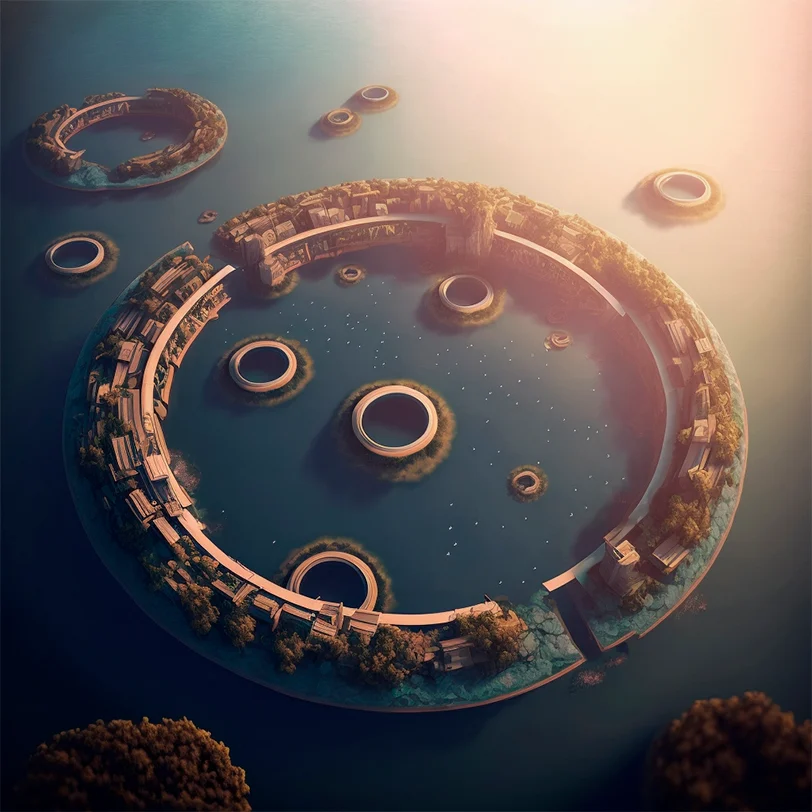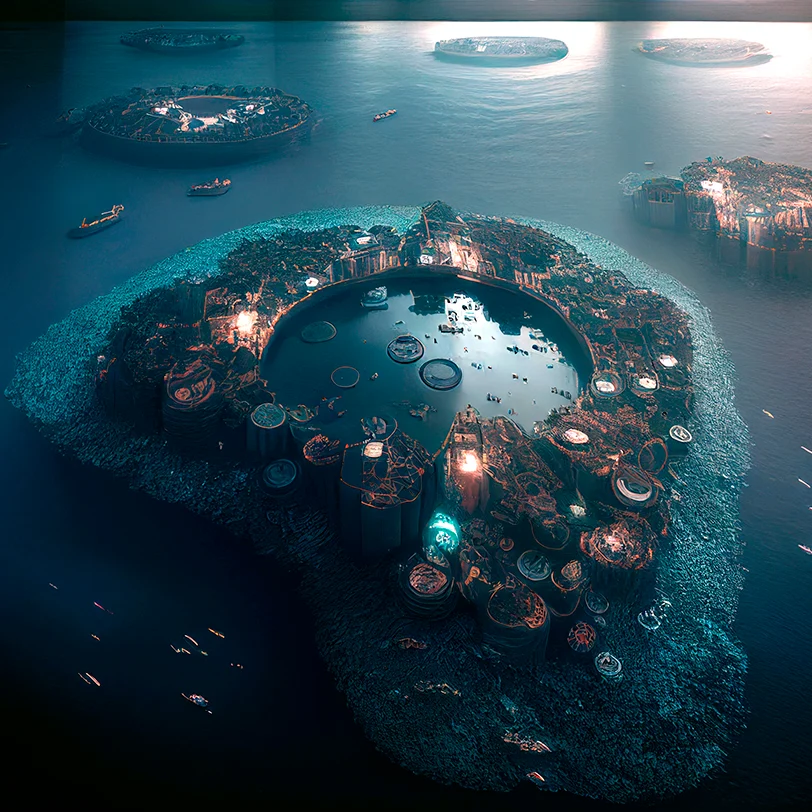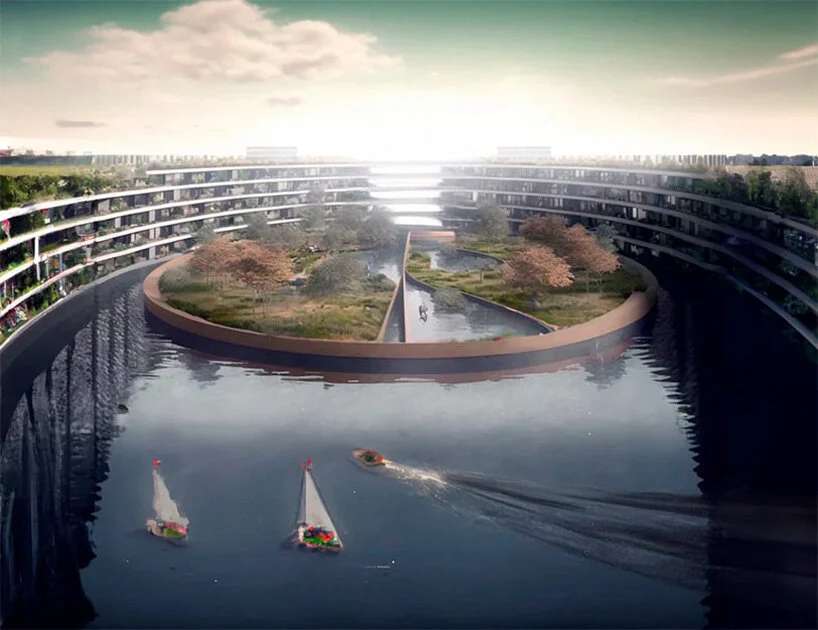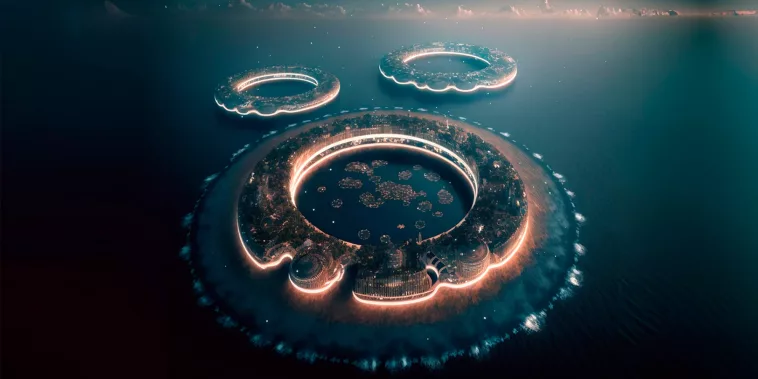With sea levels rising at an alarming rate, many countries are looking for ways to protect against submerging underwater. Estudio Focaccia Prieto has designed a revolutionary solution: Polimeropolis – a massive complex of floating cities enclosing tranquil lagoons and clear ocean waters.
The vision of Polimeropolis is to provide a sustainable environment while helping clean up the contaminated continental Garbage Patch. Equipped with renewable energy systems, it will generate electricity and water efficiently. Architects Juan Manuel Prieto and Clara Focaccia collaborated with AI artist Maxi Araya to visually represent their idea through Midjourney-generated drone shots. This new metropolis would allow residents to reside in a safe habitat without environmental hazards.
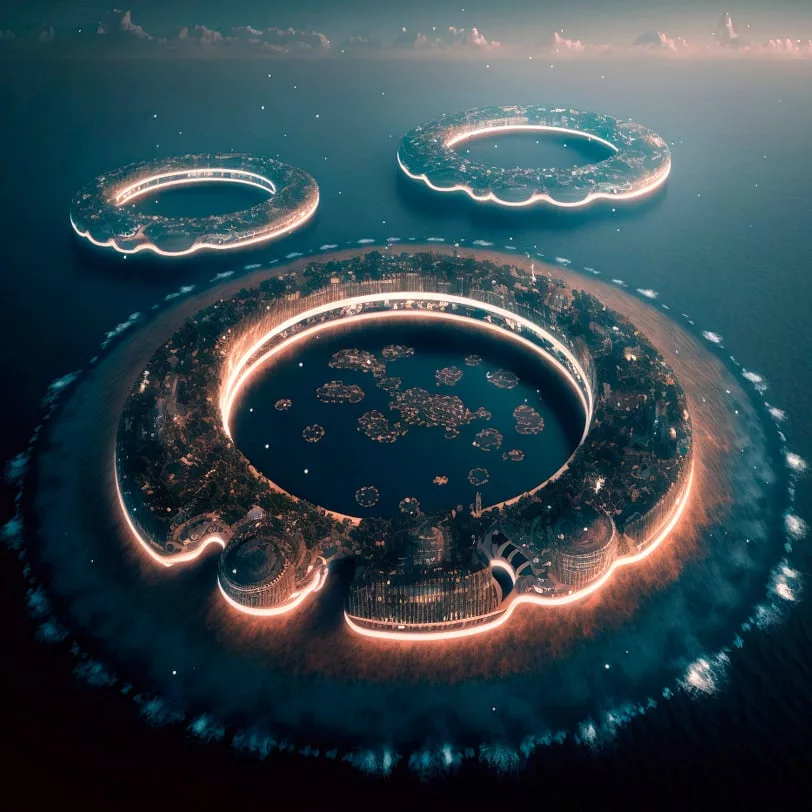
Polimeropolis offers a solution to the Great Pacific Garbage Patch with its cutting-edge conceptual project of floating urban islands. This ingenious model proposes a series of mixed-use cities in rings, which house several habitats and enclose an immense oceanic lagoon. The proposed plan is highly scalable, providing further opportunities for growth as needed. By encompassing the islands, Estudio Focaccia Prieto has constructed a containment barrier out of nets and phytoremediation vegetation which obstructs microplastics from passing through while purifying the water. This practice allows for an uncontaminated environment where aquatic and human life can thrive harmoniously.
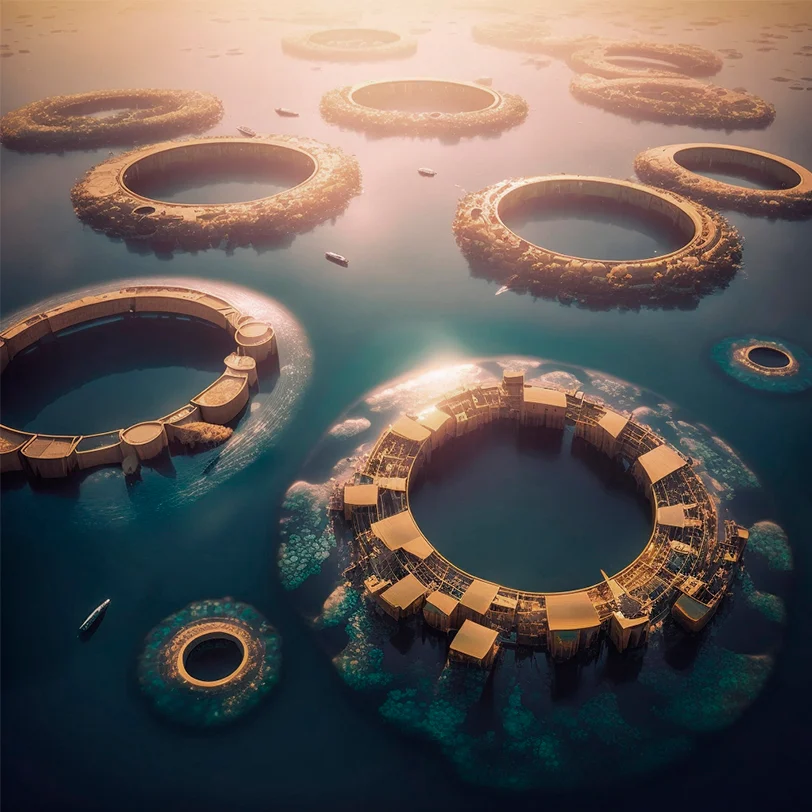
The colossal floating island, Polimeropolis, is crafted from recycled plastic residue in the ocean to cleanse our waters and protect us from ‘drowning in trash.’ The waste will be broken down and fashioned into components for a wholly re-used construction system right on site through purposeful factories stationed at sea. Moreover, these ringed cities will be independent and autonomously produce all their resources. The tidal movement in the lagoons can create electrical power while also providing a sustainable way to cultivate food from marine flora and fauna; simultaneously, reverse osmosis technology can filter seawater into potable drinking water.
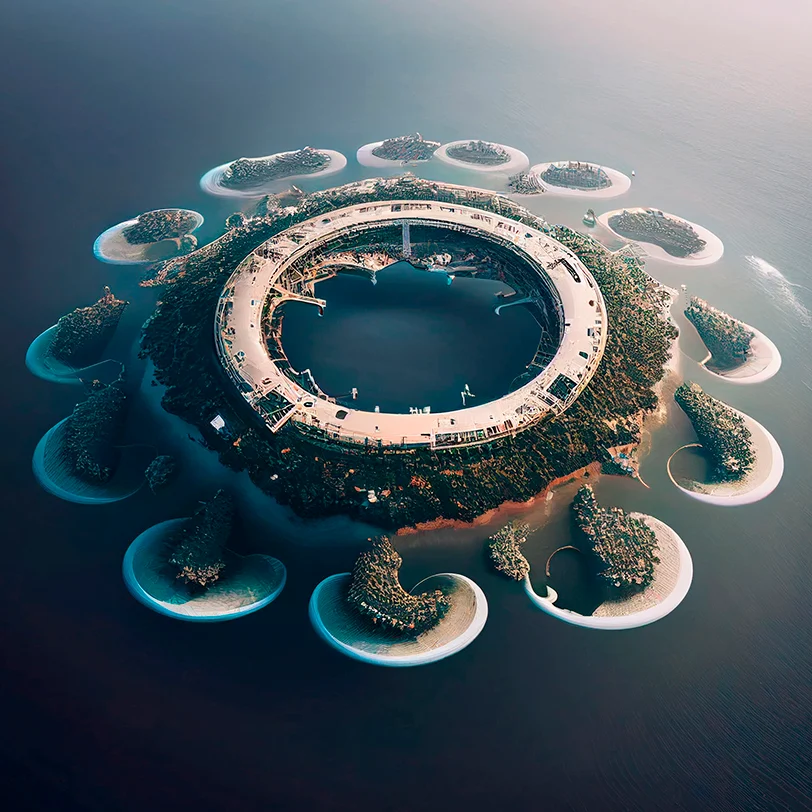
These cities perfectly combine residential and commercial sectors, hosting approximately 4 thousand people and leisurely spots for recreational activities. As growth continues, these areas will be home to parks & recreation grounds, airports/marinas, and eco-hotels – offering tourists the opportunity to explore the fascinating sanitation system used on garbage islands.
‘This endeavor is a passionate appeal to reconsider how we create, utilize and discard products, endorsing an encompassing economy that strives to finalize resource cycles and favor reuse and recycling. It represents a proposal for an innovative form of urbanization that seeks harmony between humanity’s needs while protecting nature with reverence. Not only does it tackle the negative consequences of excessive waste production, but it also encourages a healthier environment and lifestyle,’ as notes Juan Manuel Prieto.
